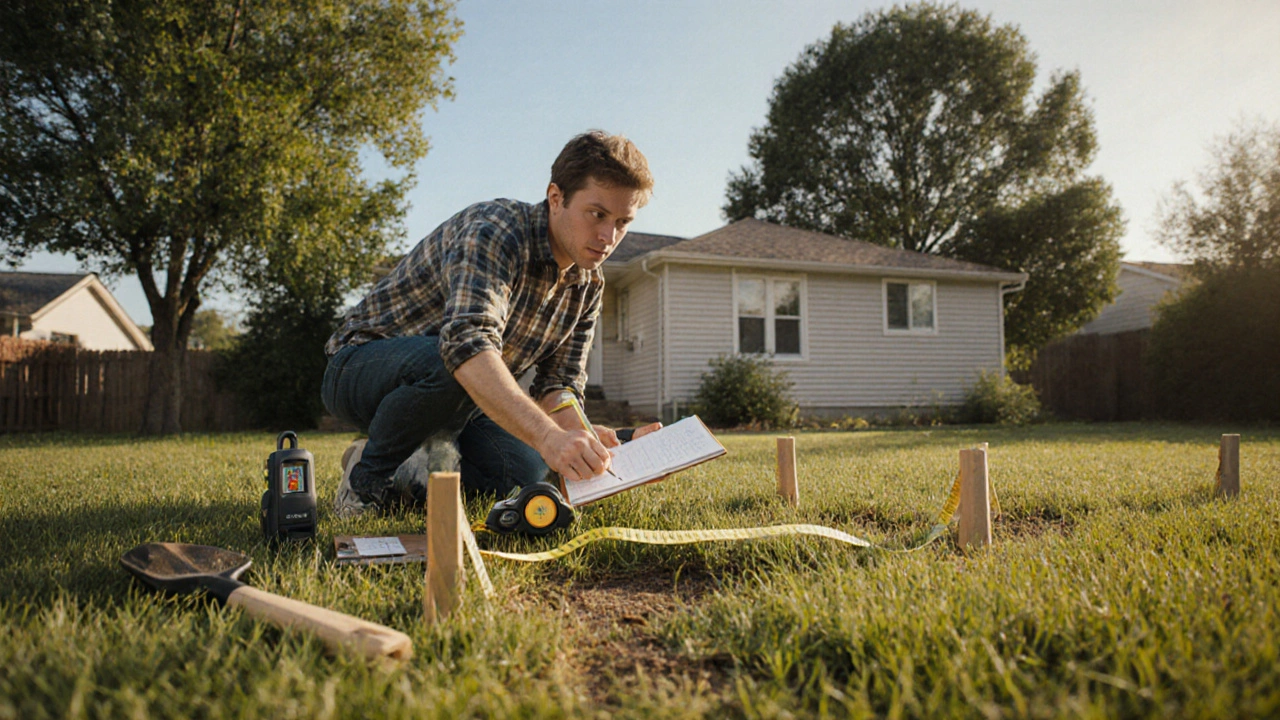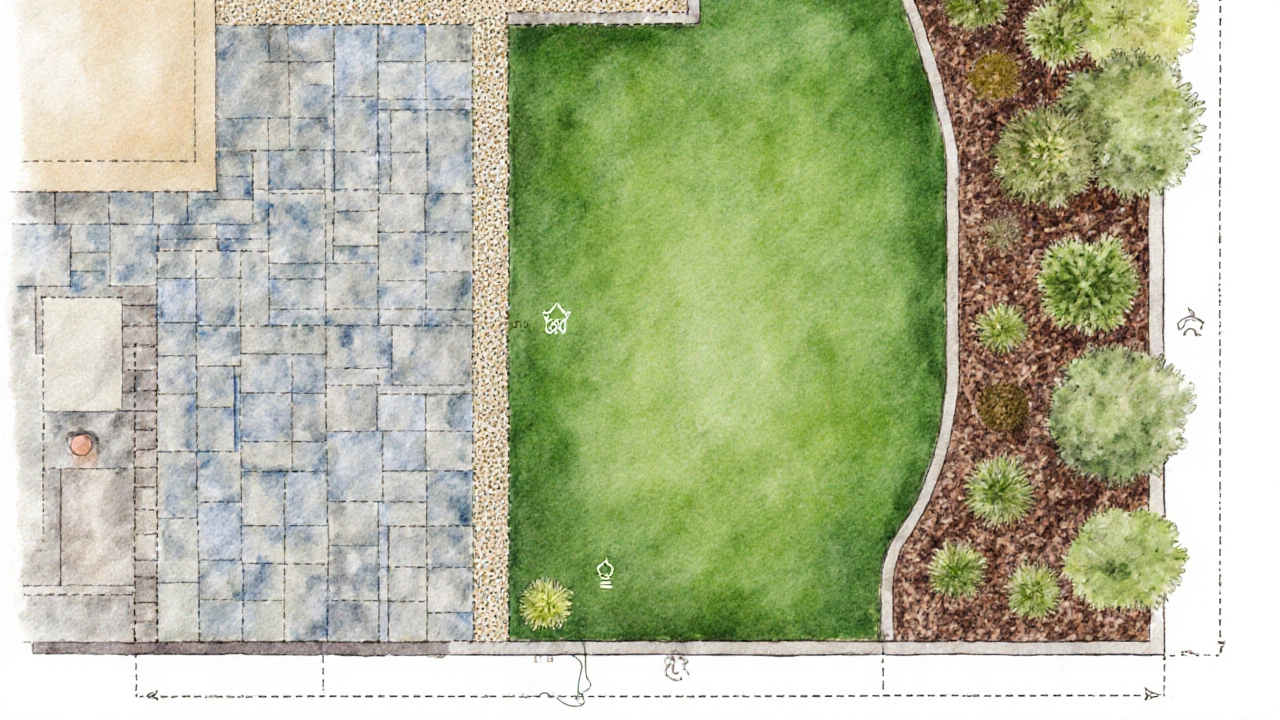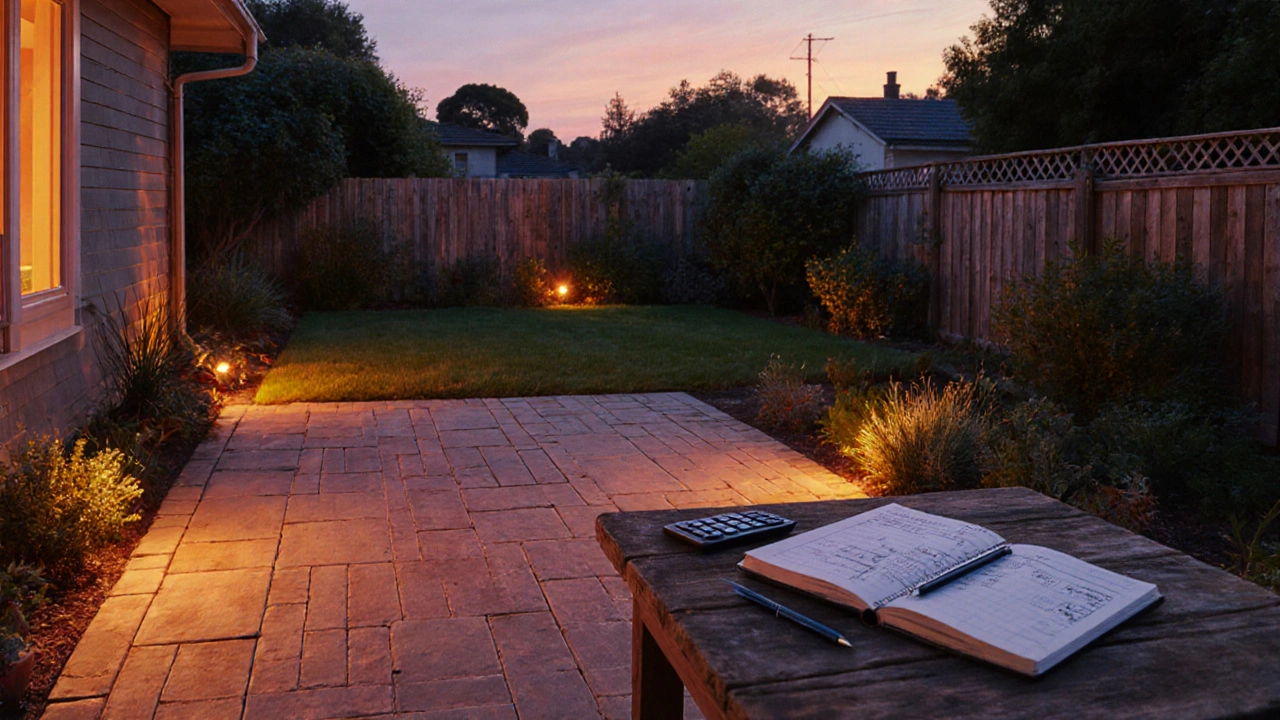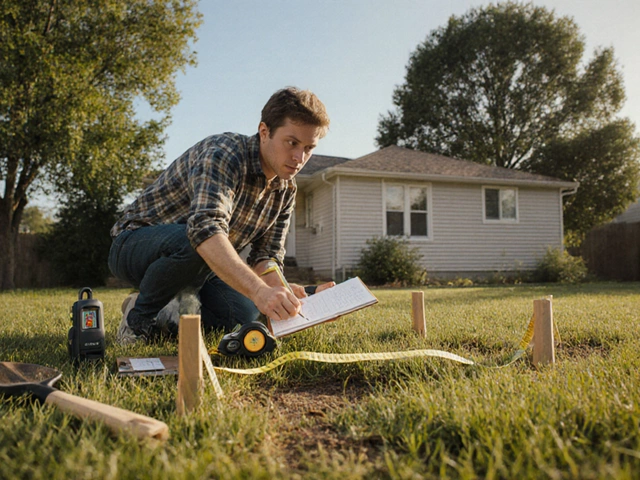How to Accurately Calculate Landscaping Costs

Landscaping Cost Estimator
Subtotal: NZD 0.00
Contingency (12%): NZD 0.00
Total Estimate: NZD 0.00
Hardscape: NZD 0.00
Softscape: NZD 0.00
Labor & Design: NZD 0.00
Key Takeaways
- Measure your outdoor area accurately before you start.
- Separate hardscape (pavers, decking) and softscape (plants, soil) costs.
- Get at‑least three quotes for labor to avoid surprise pricing.
- Add a 10‑15% contingency for unexpected expenses.
- Use a simple spreadsheet or free online calculator to keep track.
When you’re planning a garden makeover, landscaping cost calculation is the process of estimating total expenses for design, materials, labor, and ongoing upkeep of an outdoor space. Getting the numbers right early can save you weeks of re‑negotiation and keep the project from blowing past your budget.
What Drives landscaping costs?
Four main groups pull the price up or down:
- Hardscape - concrete patios, pavers, retaining walls, decking, irrigation pipes.
- Softscape - soil, mulch, grass sod, shrubs, trees, seasonal plants.
- Labor - excavation, installation, grading, planting, electrical work for lighting.
- Design & Planning - professional landscape architect fees, CAD drawings, site surveys.
Location matters too. In Auckland, material shipping and labour rates are a little higher than the national average, so always base your unit costs on local suppliers.

Step‑by‑Step Guide to Estimate Your Project
- Define the scope and measure the area. Sketch a rough plan on graph paper or use a free app. Record dimensions in metres (length × width) for every zone - patio, lawn, garden beds.
- Choose a design style. Whether you want a low‑maintenance rock garden or a lush native planting, the style dictates the material mix.
- List hardscape items. Write down each element - e.g., “30m² of interlocking pavers”, “2m high timber retaining wall (12m linear)”.
- List softscape items. Include soil depth (e.g., 0.15m), mulch volume, number of plants, and type of grass.
- Gather unit costs. Contact three local suppliers for prices per square metre or per plant. For labour, ask for an hourly rate or a fixed‑price quote for each task.
- Calculate each line item. Multiply quantity by unit cost, then add the totals for hardscape, softscape, labour, and design.
- Add contingency. Multiply the subtotal by 0.10‑0.15 and add it. This buffer covers hidden fees, soil remediation, or a change in plant availability.
- Factor in maintenance. Estimate annual watering, fertiliser, and pruning costs; add them to your long‑term budget.
Keep everything in a spreadsheet. Column A: Item, Column B: Quantity, Column C: Unit Cost, Column D: Total. A final row for “Contingency” and another for “Annual Maintenance”.
Real‑World Example - Mid‑Size Backyard in Auckland
Imagine a 150m² backyard split into three zones: a 50m² patio, a 70m² lawn, and a 30m² planting bed.
| Item | Quantity | Unit Cost (NZD) | Total |
|---|---|---|---|
| Interlocking pavers | 50m² | 45 | 2,250 |
| Patio base sand & gravel | 50m² | 12 | 600 |
| Concrete edging | 30m linear | 30 | 900 |
| Grass sod (premium ryegrass) | 70m² | 6 | 420 |
| Topsoil (15cm depth) | 70m² | 15 | 1,050 |
| Mulch (2cm) | 30m² | 8 | 240 |
| Native shrubs (10 units) | 10 | 45 | 450 |
| Landscape architect fee | 1 | 800 | 800 |
| Labour - excavation & installation | 120hours | 45 | 5,400 |
| Subtotal | 12,610 | ||
| Contingency (12%) | 1,513 | ||
| Total Estimate | 14,123 | ||
In this scenario, the bulk of the spend comes from labour (about 38%) and hardscape materials (about 30%). Knowing the split helps you decide where to save - perhaps DIY the patio base while hiring a pro for the retaining wall.

Tips to Keep Your Budget in Check
- Phase the work. Start with essential hardscape, then add planting in a later season when prices drop.
- Buy in bulk. Suppliers often give a 5‑10% discount if you purchase 100m²+ of pavers.
- Consider recycled materials. Reclaimed timber or recycled concrete can cut material costs by up to 30%.
- Get multiple labour quotes. Small local crews sometimes charge less than big landscaping firms, but verify their insurance.
- Use native plants. They need less water and fertiliser, slashing long‑term maintenance costs.
Common Pitfalls and How to Avoid Them
- Under‑estimating site preparation. Soil removal, grading, and drainage can add 10‑20% to the original quote.
- Missing permit fees. Some council regulations in Auckland require a resource consent for retaining walls over 1m high.
- Forgetting future growth. Planting a tree too close to a fence can cause later damage and extra removal costs.
- Ignoring irrigation design. An incorrectly sized drip system may waste water and raise utility bills.
Frequently Asked Questions
How much does a typical backyard patio cost in Auckland?
A 50m² patio built with interlocking pavers and a gravel base usually runs between NZD2,500 and4,000, depending on the paver quality and whether you hire a contractor or do it yourself.
Can I use an online calculator instead of a spreadsheet?
Yes. Sites like HomeAdvisor or local NZ landscaping calculators let you input area, material type, and labour rates. Just double‑check the unit costs against local quotes.
Do I need a permit for a small retaining wall?
In Auckland, any retaining wall higher than 1m typically requires a resource consent. For lower walls, you can usually proceed without a permit, but always confirm with the council.
What’s the best way to estimate plant costs?
Count each plant type, then ask two local nurseries for price per unit. Multiply by the quantity and add a 10% buffer for growth‑stage discounts or seasonal price changes.
How do I factor ongoing maintenance into the budget?
Calculate expected water usage (litres per week), fertiliser (kg per year), and pruning hours. Multiply each by the local cost - e.g., NZD0.004 per litre of water, NZD5 per kg of fertiliser - and add these totals to a separate “Annual Maintenance” line.
